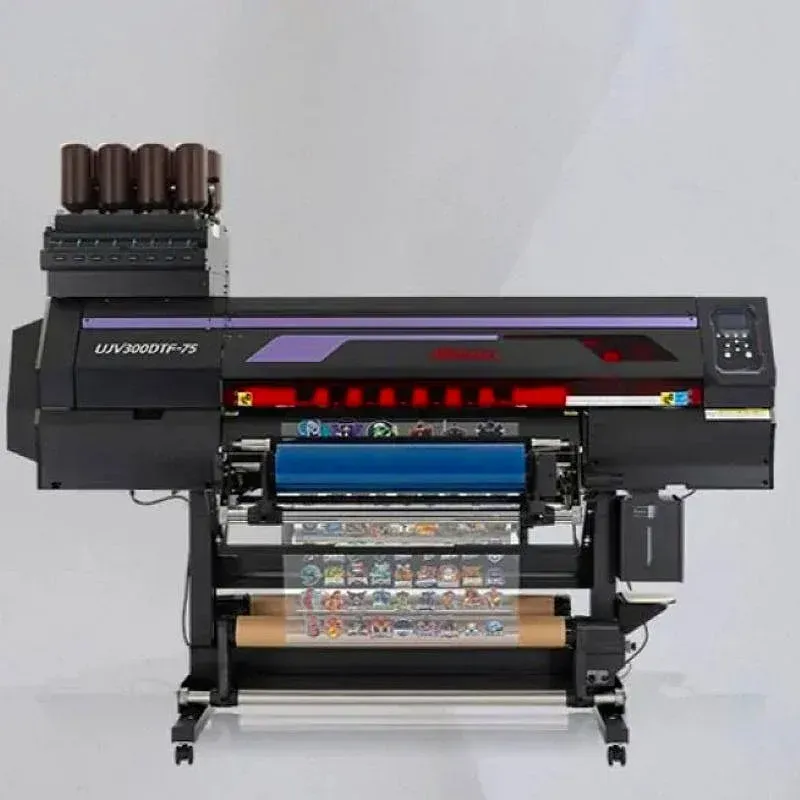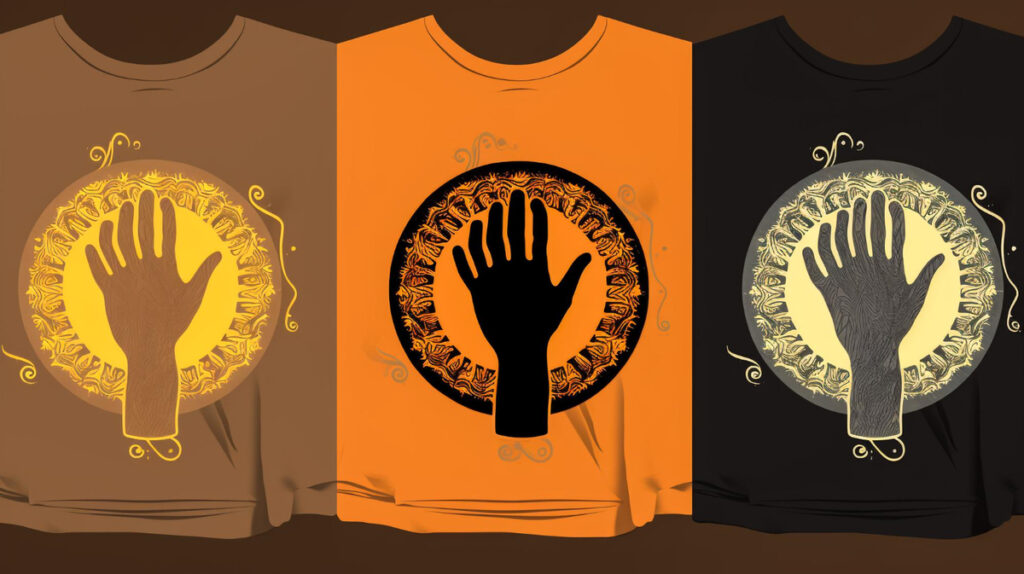UV DTF printing innovations are reshaping how designers approach fabric graphics, unlocking greater versatility across panels, sleeves, and accessories. This blending of film-based transfer with UV curing inks accelerates curing, reduces drying time, and expands substrate options from fine cottons to performance blends. The result is faster turnarounds, crisper details, and stronger wash-fastness for on-demand apparel, décor, and promotional items. As brands pursue eco-conscious production, streamlined workflows and smarter ink usage help minimize waste while maintaining vibrant, durable finishes. From bold gradients to reliable color management and predictable repeatability, the path forward looks increasingly accessible for a wide range of textiles.
In broader terms, DTF printing innovations describe a film-based transfer workflow that blends digital design with practical production realities. The approach is also known as film-to-fabric transfer, a cousin to direct-to-film technology, with renewed emphasis on color fidelity, adhesion, and durability. For brands balancing speed and sustainability, sustainable textile printing benefits from precise color control, reduced reprints, and more efficient ink usage. As adoption grows, automation, smart manufacturing, and expanded substrate compatibility will broaden its reach into fashion, home decor, and branded merchandise.
1) UV DTF printing innovations: Advancing direct-to-film technology
UV DTF printing innovations fuse the versatility of direct-to-film technology with the rapid, durable performance of UV-curable inks. In practice, this means printing a design onto a release film, applying an adhesive, and using UV exposure to cure the ink during the transfer process. The result is sharper details, more vibrant colors, and less wait time for drying, which is especially valuable for on-demand production and fast-turnaround projects.
This approach expands substrate options and reduces rework, supporting a more sustainable textile printing workflow. By curing inks instantly, manufacturers can achieve higher throughput on a broad range of fabrics while maintaining image fidelity, edge definition, and color stability across batches. These improvements are foundational to modern DTF workflows and open new opportunities in fashion, home décor, and promotional items.
2) Direct-to-film technology in the UV era: Enhanced performance with UV curing inks
The UV era in direct-to-film technology centers on UV curing inks that solidify at the moment of exposure, enabling faster production speeds and crisper, more durable graphics. UV LED curing units provide uniform, low-heat curing that protects heat-sensitive textiles and expands the range of compatible fabrics. This integration preserves the flexibility of DTF while boosting performance metrics like color gamut, wash-fastness, and edge sharpness.
With UV curing inks, the traditional bottlenecks of curing time and substrate limitations begin to fade, supporting shorter lead times and more efficient ink usage. The combination of UV DTF printing and advanced film materials reduces smudging, improves transfer reliability, and minimizes reprints—key drivers for sustainable textile printing and on-demand customization at scale.
3) The role of UV curing inks in DTF printing innovations
UV curing inks are at the heart of DTF printing innovations, delivering rapid, durable curing that preserves color accuracy and detail across fabrics. Their chemistry is designed for high pigment stability, wide color gamuts, and compatibility with a broad spectrum of textiles—from lightweight cottons to dense blends. When paired with modern printheads and precise color management software, they enable consistent reproduction across runs and substrates.
The printing workflow benefits from automated calibration, profiling, and ICC workflows that align color output from sheet to sheet. With UV curing inks, the process can tolerate tighter production windows, fewer mid-run interruptions, and more predictable results, all of which are essential for scalable DTF operations and reliable sustainable textile printing programs.
4) Edge-to-edge color and durability with UV DTF
A key strength of UV DTF printing innovations is the ability to deliver edge-to-edge color with high resolution and smooth gradients. UV-curable inks produce crisp outlines and photorealistic details on a wide range of fabrics, including knits and performance textiles. This capability supports complex, multi-color designs that maintain fidelity across seams and folds.
Durability is another major benefit: UV-curable inks exhibit strong wash-fastness and resistance to cracking, making prints suitable for activewear, upholstery, and high-wthe wear applications. When combined with proper pretreatment and finishing steps, these prints maintain brightness and flexibility after repeated laundering and sun exposure, aligning with both quality standards and the goals of sustainable textile printing.
5) Substrate versatility: expanding textile compatibility in UV DTF printing
UV DTF printing innovations are expanding substrate compatibility, enabling vibrant designs on cotton, blends, knits, and technical fabrics. Innovations in film materials, release liners, and adhesive formulations help ensure reliable color transfer, edge definition, and durable washes across diverse fabrics. This versatility is a core driver for designers seeking sustainable textile printing options for apparel, accessories, and home décor.
To maximize performance, pre-treatment and finishing options are increasingly specialized, with eco-friendly coatings and process optimizations that reduce waste. By embracing these advances, brands can achieve consistent results on sustainable textiles, recycled fabrics, and performance materials while maintaining strong color fidelity and print durability throughout the product lifecycle.
6) Practical implementation and future trends in UV DTF printing innovations
Implementing UV DTF printing innovations starts with a clear business case: assess production volumes, lead times, and customization needs to determine if UV DTF aligns with goals. Selecting compatible substrates, investing in reliable UV LED curing systems, and ensuring film, adhesive, and pretreatment options are optimized are critical steps. Training operators on dye chemistry, curing parameters, and post-processing ensures consistent results across batches.
Looking ahead, trends such as AI-driven color management, predictive maintenance, and eco-friendly inks will shape the next wave of DTF innovations. Biodegradable films, reduced VOCs, and smarter automation will further enhance sustainability and efficiency, making UV DTF printing a smarter, greener choice for on-demand textile production and beyond.
Frequently Asked Questions
What are UV DTF printing innovations and how do they change direct-to-film technology?
UV DTF printing innovations combine UV-curable inks and LED curing with the DTF workflow to deliver faster curing, sharper details, and greater durability across a broader range of fabrics. By advancing direct-to-film technology, these innovations enable on-demand customization with higher color fidelity and improved wash resistance.
How do UV curing inks influence color accuracy and durability in UV DTF printing innovations?
UV curing inks cure instantly under UV light, enabling precise color reproduction, a wider color gamut, and smoother gradients. In UV DTF printing innovations, this results in vibrant, durable prints with reduced smudging and faster production cycles.
Which substrates work best with UV DTF printing innovations and how does film material affect durability in sustainable textile printing?
A wide range of fabrics—from lightweight cottons to dense blends—works well with UV DTF printing innovations when paired with compatible pretreatment and film materials. Advances in film, adhesives, and release liners improve transfer durability, while eco-friendly film chemistries support sustainable textile printing goals.
What role do printheads, color management, and automation play in UV DTF printing innovations?
High-resolution printheads and stable pigments, paired with smart color management (ICC workflows), ensure consistent color across runs in UV DTF printing innovations. Automation for job planning and calibration reduces setup time, waste, and manual errors.
Can UV DTF printing innovations support on-demand customization and sustainable textile printing?
Yes. UV DTF printing innovations enable on-demand, small-batch production with accurate color matching and fewer reprints, while UV curing inks and efficient film chemistries contribute to lower VOCs and a more sustainable textile printing workflow.
What steps should a business take to adopt UV DTF printing innovations in production?
Assess expected volumes and ROI for UV DTF printing innovations, invest in UV LED curing, compatible substrates, and UV inks; implement automated color management and workflow software; train operators; and run pilot projects to optimize profiles before full-scale deployment.
| Aspect | Key Points |
|---|---|
| What makes UV DTF printing innovations distinctive | Combine UV-curable inks with DTF workflow to enable on‑demand, vibrant, durable prints with faster curing and improved image fidelity compared with traditional inks. |
| UV DTF printing inks | UV-curable inks deliver sharp resolution, wide color gamut, fabric compatibility, and instantaneous curing to reduce smudging and speed up production. |
| UV curing systems | Efficient UV LED units provide fast, uniform curing, lower energy use, cooler operation, protecting heat‑sensitive textiles and expanding substrate options. |
| Direct-to-film technology and film materials | Advanced film stock, adhesives, release liners, and gang sheets improve color transfer, edge fidelity, wash durability, and production efficiency. |
| Printheads and color management | High‑resolution printheads, pigment stability, and color‑management software ensure consistent color; automated calibration reduces setup time and waste. |
| Substrate compatibility and finishing | Improved pre‑treatment, coatings, and heat transfer methods expand fabric ranges (blends, knits, performance fabrics) with eco‑friendly finishing options. |
| Software, automation, and smart manufacturing | Intelligent job planning, automated color matching, and ERP integration streamline production, cut costs, and improve batch consistency. |
| Direct-to-film technology in practice | Workflow: print on release film, apply adhesive, press; UV curing during transfer yields bright, durable prints with minimal dry time, ideal for on‑demand. |
| Applications across industries | Fashion, promotional products, home textiles, and branding benefit from fast turnarounds, durable graphics, and sustainable ink usage. |
| Color, durability, and sustainability considerations | Prints offer wash‑fastness, reduced cracking, broader color gamuts; eco‑friendly inks/films reduce VOCs and waste with efficient curing. |
| Challenges and considerations for adoption | High initial investment, operating costs, substrate compatibility needs, and training requirements to ensure consistent results. |
| Future trends and opportunities | AI‑driven color management, predictive maintenance, eco‑friendly inks/films, expanded substrates, and multi‑layer/ textured finishes. |
| Practical best practices | Define a business case, choose compatible substrates, automate workflows, train operators, and pilot projects before scale‑up. |



